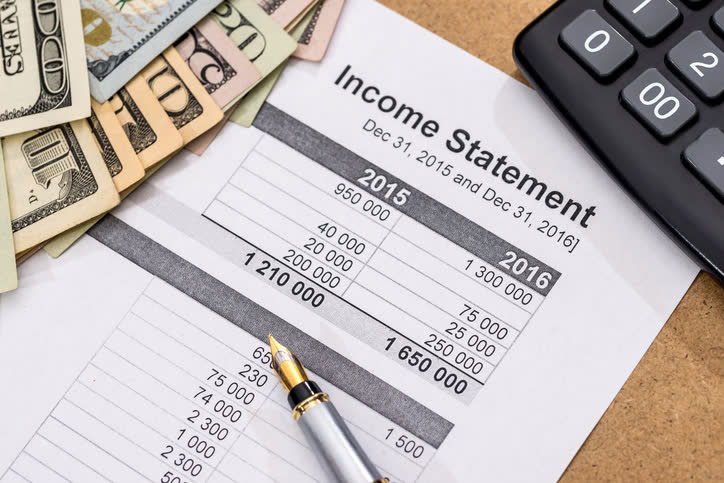Balance Sheet vs Profit and Loss Statement: What's the Difference?
Dec 23, 2023 By Susan Kelly
The balance sheet and profit and loss (P&L) statement are two of the three financial statements that firms produce regularly. Creditors use such statements, market analysts, and investors to evaluate a company's financial health and growth potential. The cash flow statement is the third and final financial statement.
Balance Sheet

The assets, liabilities, and shareholder equity of a firm are all listed on the balance sheet. It serves as a foundation for calculating return rates and assessing a company's capital structure. In this financial statement, the assets and liabilities of a company are listed along with the total amount of money invested by the company's shareholders.
Assets and liabilities on a firm's balance sheet reflect the resources and assets of the organization, as well as the financing methods used to acquire those resources and assets. For both investors and creditors alike, the balance sheet serves as an excellent indicator of how well a company's management manages its resources.
There are several ways to calculate financial ratios using the balance sheet. A typical balance sheet includes the following components.
Assets
- Cash and other forms of cash. Treasury bills (T-bills), short-term certificates of deposit (CDs), and cash are all examples of highly liquid assets.
- Financial instruments that can be sold. There is a market for both equity and debt in this category.
- Receivables. Accounts receivable, often known as customer debt, is money owed to a business by its customers.
- Inventory. This section contains all of the items that are currently for sale.
Liabilities
- Debt. For the time being, this encompasses both long-term debt and bank debt.
- Overhead. Rent, tax, and utility costs are all factored into this calculation.
- Payables. Wages and dividends are also included in this category.
Profit and Loss (P&L) Statement
An income statement or P&L statement is a financial report summarising revenues, costs, and expenses for a given period, usually a fiscal year or quarter. These documents reveal whether or not a business can make a profit by increasing income or decreasing expenditures, or by doing both simultaneously.
The "statement of profit and loss," "statement of operations," "statement of financial performance," and "income and expense statement" are just a few of the many names for the P&L statement.
Realized Profits and Loss
Total revenues are divided by total costs and expenses in calculating the P&L statement's net profit or loss for the given period. Profitability can be shown over time by cutting costs and expenses or growing sales. P&L statements are often released at the end of a company's fiscal year, although they may also be released quarterly. When examining a P&L statement, everyone from accountants to analysts to investors pays close attention to the cash flow and the ability to borrow.
Expenses and Income
Revenues and expenses appear on the P&L statement when they are incurred, not when the money enters or leaves the business. That's a big advantage of the P&L statement, which is based on the Internal Revenue Service (IRS) and GAAP definitions of operating and non-operating revenues and expenses.
P&L Statement vs Balance Sheet
Even while revenues, expenses, and profits are included in the balance sheet and the P&L statement, there are significant variations. First and foremost: A balance sheet shows the assets, liabilities, and shareholder equity of a firm at a particular point in time, whereas a P&L statement shows the revenues, costs, and expenses over a specified period.
What Does Each Statement Mean?

Each document is designed for a certain purpose. A company's assets and liabilities and long-term investments are more fully disclosed in its more comprehensive balance sheets.
The full value is shown on the balance sheet for long-term investments and obligations. The name " balance sheet " was coined because the three principal accounts finally equal each other, and "balance sheet" was coined. The total of all assets must match the total of all liabilities and shareholder equity.
If a company is profitable, the P&L statement will tell you that. Even though accountants and investors utilize the P&L statement to assess the correctness of financial transactions, a company can conduct its internal audit of the statement for productive objectives.
Keeping an eye on financial statements reveals where revenue is strong, and expenses are being incurred efficiently, and the contrary is also true. As an illustration, a business that has seen increases in sales but decreases in profits may decide to look for innovative ways to minimize operating expenses.
Profit vs Total Value
If a company is in red or black, the P&L statement reflects this by indicating the company's net income. According to a company's balance sheet, its overall value can be determined. Both of these are oversimplified, but this is how investors and lenders tend to see the P&L statement and the balance sheet.
To avoid confusion, investors need to know the difference between earnings and cash flow. If a company doesn't have any money coming in, it can be profitable and generate cash flow.
-
 Know-how Oct 31, 2023
Know-how Oct 31, 2023The Most Effective Catastrophic Health Insurance
catastrophic coverage may be a suitable option if you cannot afford normal health insurance rates. Catastrophic plans are available to those under the age of 30 or those who meet the government's requirements for a hardship exemption because of their cheap monthly premiums but high deductibles and out-of-pocket maximums.
-
 Banking Nov 04, 2023
Banking Nov 04, 2023Magnetic Stripe Cards: What Are They?
With the swipe of the card reader, personal information may be retrieved from the card's magnetic stripe. The cardholder's name, address, bank details, and account balances are all examples of personally identifiable information. Because of the ease with which this data can be accessed immediately, transactions can be completed more swiftly and precisely. Since IBM introduced magnetic stripe cards in the 1960s, they have been employed in several scenarios.
-
 Taxes Feb 19, 2024
Taxes Feb 19, 2024How to File Your Taxes
Filing your taxes can be simple and manageable. Here are the key tips and tricks to make tax filing a breeze this year!
-
 Banking Oct 26, 2024
Banking Oct 26, 2024No-Down Payment Mortgages Explained: Eligibility and Options for Homebuyers
Unlock the path to homeownership with our guide to no-down payment mortgages. Learn about eligibility, loan options, and how you can buy a home without a large upfront cost
